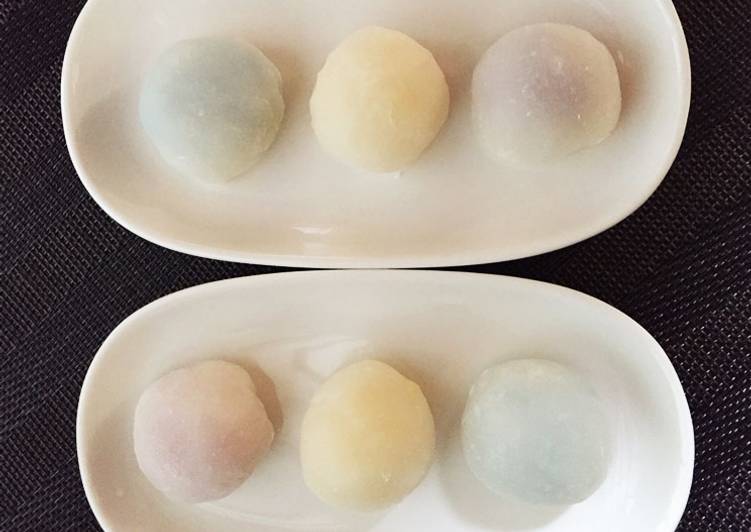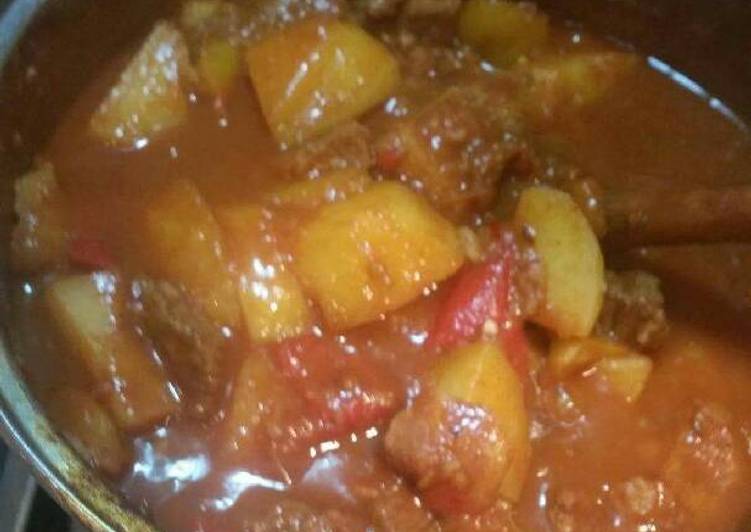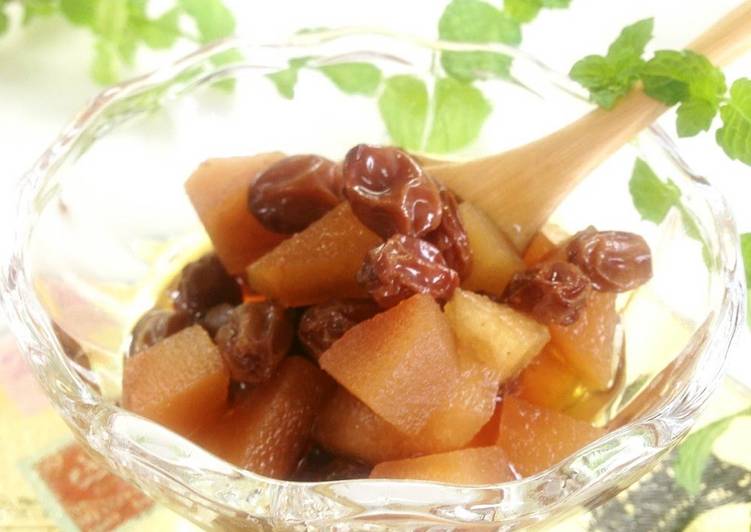
Hello everybody, it is John, welcome to our recipe page. Today, we’re going to prepare a distinctive dish, wagashi <mock "daifuku"cooked using microwave >. One of my favorites food recipes. This time, I will make it a bit tasty. This is gonna smell and look delicious.
Wagashi <Mock "Daifuku"cooked using microwave > is one of the most popular of current trending meals in the world. It is simple, it is quick, it tastes yummy. It’s appreciated by millions daily. They’re fine and they look fantastic. Wagashi <Mock "Daifuku"cooked using microwave > is something that I have loved my whole life.
Sweet/Glutinous brown rice mochi daifuku stuffed with dates and black sesame, dusted with kinako. Daifuku (大福) or Daifuku Mochi (大福餅) is a type of wagashi (和菓子), Japanese sweets. You can quickly steam mochi on stovetop or in the microwave.
Guide to Make Wagashi <Mock "Daifuku"cooked using microwave >
To get started with this recipe, we have to prepare a few components. You can cook wagashi <mock "daifuku"cooked using microwave > using 6 ingredients and 8 steps. Here is how you can achieve that.
Ingredients
The ingredients needed to make Wagashi <Mock "Daifuku"cooked using microwave >:
- Take 100 g Shiratama-ko (a kind of rice flour)
- Prepare 50 g Sugar
- Make ready 150 ml Water
- Get 120 g White Kidney bean jam
- Prepare Food colorings
- Take Potato Starch
Daifuku Mochi is one of the most traditional but very popular Japanese sweets. Mochi is usually made from sweet rice (also called Mochi rice) cooked and pounded until it becomes a paste that is very sticky and smooth. Daifuku, AKA Daifuku Mochi, is a type of Japanese sweet usually served with green tea. It is commonly filled with red bean paste.
Instructions
Instructions to make Wagashi <Mock "Daifuku"cooked using microwave >:
- Ingredients for 12 pieces
- Colorize the white bean jam with food coloring dissolved in water. 30g→blue 30g→purple 30g→yellow 30g→red
- Divide each color bean jam into 3 and make them round.
- Make Mochi with Shiratama-ko (a kind of rice flour). Put the Shiratama-ko into a boul. Pour the little water. Mix them as smashing lumps of shiratama-ko. *Add the water little by little (for 2 or 3 times).
- When it's no longer lumpy, add the rest water and mix them with a spatula. Add the sugar and mix them.
- Pour the mixture in a heat‐resistant container through a sieve. Heat it at 500W for 2 min in a microwave oven. Take it out and mix it. Heat it at 500W for 2 min. again.
- Sprinkle the Potato Starch on a steel tray. Put the Mochi on it. Cut the Mochi into 12 as sprinkling the Potato Starch.
- Wrap the bean jam balls with the Mochi. Brush off the Potato Starch.
The flour is mixed with water and steamed either on the stovetop or in the microwave. With this quick method, sticky tasty mochi is ready in no time. A fun take on everyone's favorite Fun to make and to east, these Japanese sweets are easy to make with a microwave in only a few Great recipe for Plump Matcha Daifuku. The matcha daifuku that I saw in an online store looked. Wagashi are traditional sweets in Japan that has a rich history, story and culture.
As simple as that Simple Way to Prepare Wagashi <Mock "Daifuku"cooked using microwave >
So that is going to wrap it up with this exceptional food wagashi <mock "daifuku"cooked using microwave > recipe. Thank you very much for your time. I’m sure you will make this at home. There is gonna be interesting food at home recipes coming up. Don’t forget to bookmark this page in your browser, and share it to your family, colleague and friends. Thanks again for reading. Go on get cooking!
Print this page


